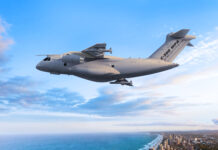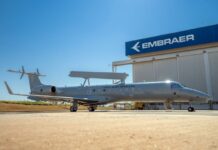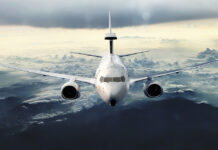Russia’s invasion of Ukraine and heightened tensions along NATO’s eastern flank, coupled with multi-domain operations in the Indo-Pacific Region, have placed considerable pressure on NATO members’ ageing fleets of manned Airborne Early Warning & Control (AEW&C) aircraft. This has triggered an accelerated procurement drive not only by NATO members, but also from different customers with national programmes.
Aside from commercial aircraft, for the last two decades, the trend in the AEW&C domain has been towards utilising business aircraft platforms which can fly higher, faster, longer, and able to operate from shorter runways with a reduced logistical footprint, while costing less to sustain, operate and maintain.
Boeing E-7
In February 2023, the US Air Force awarded Boeing a USD 1.2 Bn contract to develop two US variant rapid prototype platforms of the E-7 AEW&C aircraft. The E-7A is intended to replace the ageing Boeing E-3G Sentry, which for nearly 50 years served as the backbone of the US Air Force AWACS fleet, and is currently being retired since it has become increasingly hard to maintain. The USAF decided to buy a fleet of up to 26 E-7s – to be delivered by 2032 – with the first of two rapid prototype E-7 aircraft planned to be fielded in 2027, and a production decision on the remainder of the fleet due in 2025.
The USAF is the latest customer for the E-7 AEW&C aircraft, which is already in service with the Royal Australian (RAAF), South Korean and Turkish Air Forces and is also under production for the UK’s Royal Air Force (RAF). The USAF E-7 is a highly modified airborne battle management and command and control (BMC2) aircraft integrating a Boeing 737-700 Next Generation, with increased gross weight, reinforced undercarriage, wings and central fuselage. The central fuselage has been designed to accommodate the Northrop Grumman multi-role electronically scanned array (MESA) radar mounted on top of this section, alongside two 180 kVA generators to meet power generation needs alongside the power provided by the commercial CFM-56 engines. The US version shares the technologies and systems already installed on the still in-production version for the UK’s RAF, including the two-screen configuration for the 10 multifunction operator mission consoles (MFCs), as well as the specific systems requested by the US customer including the incorporation of M-code GPS, mobile user objective system (MUOS) satellite communication, open mission system software and mission system updates for cyber security and programme protection. The US E-7 will also have an open mission system (OMS) architecture to simplify future upgrades, with the technology to be tested by the USAF in 2025. Although not specified, a customised electronic warfare self-protection suite (EWSPS) is expected to be incorporated.

Credit: USAF
In terms of defensive features, the E-7A Wedgetail for the RAAF has been equipped with Northrop Grumman’s missile warning system (MWS) and directional infrared countermeasures (DIRCM), countermeasures dispensing system (CMDS), as well as electronic support measures (ESM) and radar warning receivers (RWRs).
The E-7’s MESA’s radar design provides coverage through 360°, with an integrated identification friend or foe (IFF) system. The antenna is an active electronically scanned array (AESA) design, employing transmitter/receiver modules (TRMs) with gallium nitride (GaN) technology, and operating in the L-band to provide long-range search and tracking capabilities. The antenna is packaged in an aerodynamic dorsal mount to dimmish drag compared to legacy designs such as on the E-3A. In contrast to legacy AEW radar systems limited by mechanical scan rates of 10–12 seconds, the MESA radar has variable scan rates and instantaneous target revisit rates to satisfy diverse mission priorities.
In March 2019, the UK MOD signed a USD 2.1 Bn contract with Boeing for five E-7A Wedgetail AEW1 platforms, later reduced to three, but this decision could be revisited based on a recent programme assessment. These are based on second-hand civilian platforms which are modified and equipped with the mission suite by UK STS Aviation; the first platform is expected to be handed over in late 2024. The UK baseline mission suite is similar to the US but with self-protection systems (SPS) by Leonardo including MAPPS (modular advanced platform protection system) and Thales Elix-IR threat warning system and Vicon-XF CMDS. In July 2023, the US, UK and Australian Air Chiefs signed a ‘joint vision statement’ with the intended declaration to co-develop the E-7 Wedgetail and maintain interoperability.
IAI Elta CAEW, and Joint Solutions with L3Harris and Embraer
In July 2022, Israel Aerospace Industries (IAI) announced the signing of a contract valued at over USD 200 M to provide special mission aircraft to a European NATO member. No further details were provided but evidence later emerged from Italian MOD documentation that the contract was signed in March 2022 with an Elta Systems subsidiary and was related to two conformal airborne early warning & control (CAEW) ELW-2085 aircraft mission suites for procurement and installation on two Gulfstream Aerospace G-550 platforms already acquired separately by the Italian MOD, together with associated in-service support. The new CAEWs will increase the Italian Air Force’s fleet of two platforms to ensure a continuous air surveillance of national airspace and support the Alliance in overseas operations, as demonstrated by their contribution to NATO’s eastern flank surveillance operations triggered by the Russian–Ukrainian conflict and their recent deployment in the Far East with F-35A fighters.

Credit: Singapore MINDEF
Delivered initially to the Israeli and then Republic of Singapore air forces, the IAI/Elta CAEW ELW-2085 aircraft distinguishes itself by having pioneered the current trend of using high performance fuel-efficient business jets for AEW&C solutions and its unique low drag conformal installation of the main mission sensor. The multi-mode, dual band (L- and S-bands) AESA radar developed by Elta Systems features two lateral conformal L-band and front/back S-band antennas using GaN technology, with dynamic resource allocation, ECCM and low false alarm rate in addition to an IFF system, to provide long-range continuous 360° surveillance against airborne and maritime threats. Managed by a NATO compatible BMC2, with six MFC operator stations and two pilots. The platform is fitted with multi-band radios, data links and SATCOM suite to act as a full network centric operation (NCO) communication node, and the CAEW mission package also includes an ESM/ELINT suite and an EWSPS including MWS, RWR and CMDS. With an endurance of 9+ hours, the CAEW systems can reach a flight altitude of 13,530 m within 20 minutes, with the radar ready shortly after take-off.
IAI/Elta and L3Harris Technologies have recently expanded their teaming agreement to provide US and NATO interoperable AEW&C solutions. The two companies are offering a modified Bombardier Global 6500 AEW&C solution for NATO’s interim Allied Future Surveillance and Control (AFSC) programme, and for the Republic of Korea Air Force’s AEW&C programme in cooperation with Korean Air Lines, in addition to several other NATO partners. Under the proposal, the L3Harris would function as the system integrator, outfitting the platform with Elta’s conformal AEW systems and BMC2 suite, as well as L3Harris’ communications suite.
The same family of S-band radar as that on the CAEW ELW-2085 aircraft was used on the P600 AEW aircraft developed in partnership by Embraer and IAI/Elta. Based on the Embraer Praetor 600 business jet, the AEW version is centred on the Arkhe mission management system from Embraer’s Atech with three operator consoles. The latter manages the radar in a dorsal radar antenna with 240° coverage (120° on each side of the aircraft), communications, IFF, ESM/ELINT and self-protection suite. With a service ceiling of up to 13,200 m, the Praetor 600 has a top speed of Mach 0.8 and flight endurance of 7.5 hours.
Saab GlobalEye
In June 2022, Saab received an order from Swedish Defence Materiel Administration for two GlobalEye AEW&C aircraft, with deliveries planned during 2027. The contract, worth SEK 7.3 Bn, includes options for two additional platforms. Sweden is the second GlobalEye customer, the latest iteration of the Saab AEW/AEW&C system suite installed on board the Bombardier Global 6000/6500 business jet. The launch customer was the United Arab Emirates (UAE), which signed a USD 1.27 Bn contract in November 2015 for two platforms, followed by an order for three additional aircraft. So far, three aircraft have already been delivered, while the fourth conducted its first flight on 3 April 2023. The fourth UAE aircraft features new radomes to protect unspecified sensor antennas.
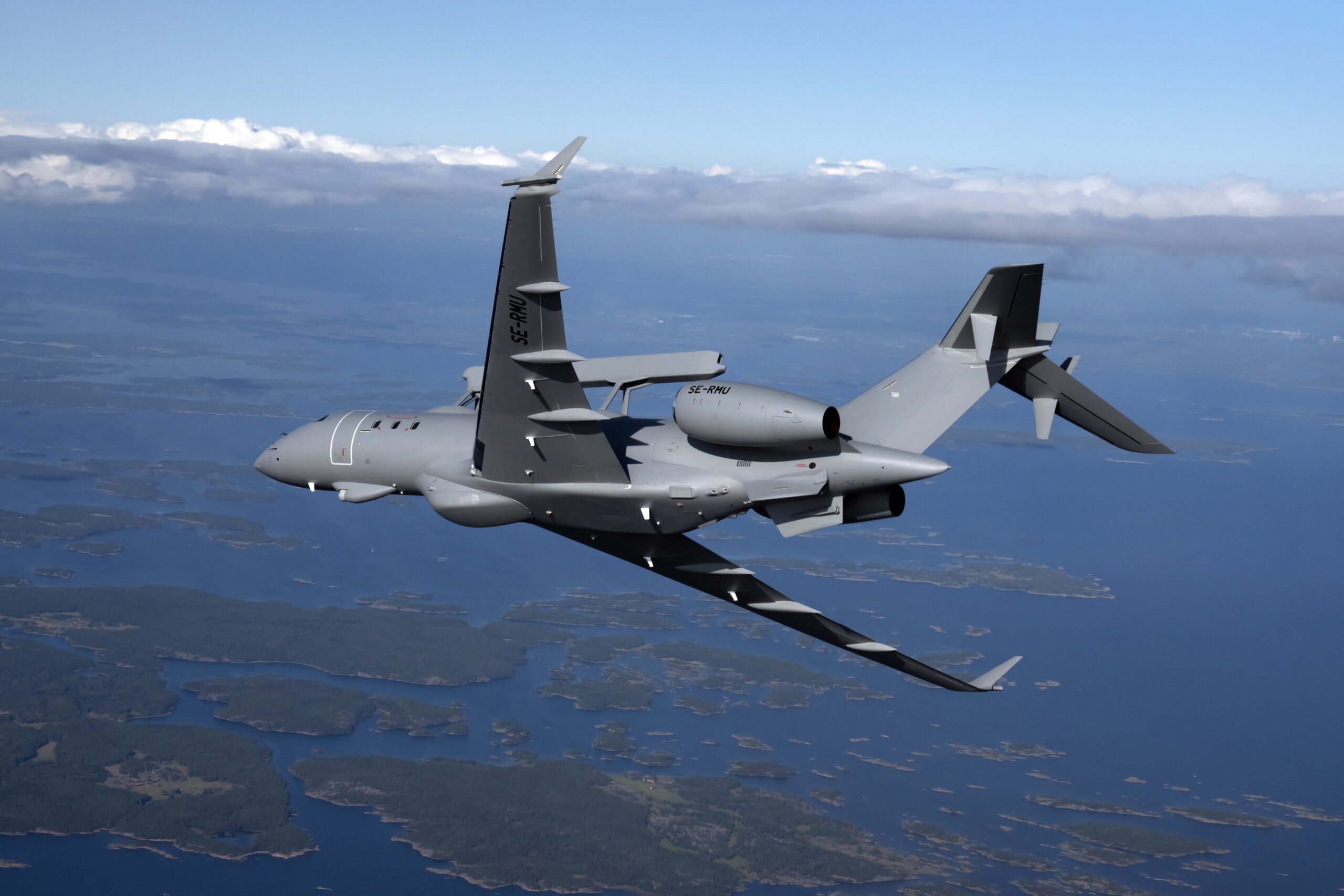
Credit: Saab
Based on the Bombardier Global 6000, and providing over 11 hours of operational endurance, the GlobalEye AEW&C is equipped with a multi-domain sensor suite capable of long-range detection and identification. The playform’s mission systems include the Saab Erieye ER air surveillance AESA radar, Leonardo Seaspray 7500E family multi-role radar, Teledyne Flir Star Safire 380HD optronic sight, Saab ESM/ELINT suite, automatic identification system (AIS), and IFF/ADS-B.
The gathered information is fused and managed by a human-centric C2 system. Contained in the distinctive ‘ski-box’ mounted on top of the fuselage, the new S-band Erieye ER incorporates GaN TRMs, and has an instrumented range of over 650 km – which is a 70% increase compared to the Erieye’s predecessor – as well as resistance to jamming and clutter rejection. For maritime surveillance, the Erieye ER works in combination with the optronic sight and the Leonardo Seaspray 7500E radar, which provides a long-range wide area, ground-moving target indicator (GMTI). In addition to the HES-21 RWR function, the EWSPS includes MWS, LWS and CMDS. The C2 system consists of a number of 30-inch display-equipped MFCs defined by system configuration, and a comprehensive communications suite. On-board artificial intelligence allows for improved real-time data analysis.
The Saab AEW/AEW&C system was sold in different configurations and platforms to Brazil, Greece, Mexico, Pakistan, Poland, Saudi Arabia (even if not officially stated), Sweden, Thailand and UAE, all with the baseline Erieye radar. Poland, as the most recent customer, has contracted Saab on July 2023 for the delivery of two Saab 340 AEW aircraft. ESD understands that the two AEW aircraft are second-hand (ex-UAE) platforms returned to Saab, as the first refurbished aircraft was handed to the customer in September 2023, only two months after the contract was signed.
Northrop Grumman E-2D Advanced Hawkeye
In mid-September 2023, the US Naval Air Systems Command (NAVAIR) awarded a USD 845.5 M contract to Northrop Grumman for the E-2D Delta System Software Configuration 6 (DSSC 6), scheduled to enter service from 2028. Intended to provide the most significant change to the E-2D Advanced Hawkeye (AHE) AEW&C suite, the DSSC 6 replaces the current integrated navigation, controls and display systems and tactical mission computer on the aircraft with a modern Hawkeye cockpit technical refresh (HECTR) and the theatre combat identification (TCID). The latter includes the upgrades of the 25-year-old computing infrastructure, alongside rapid integration of new capabilities.
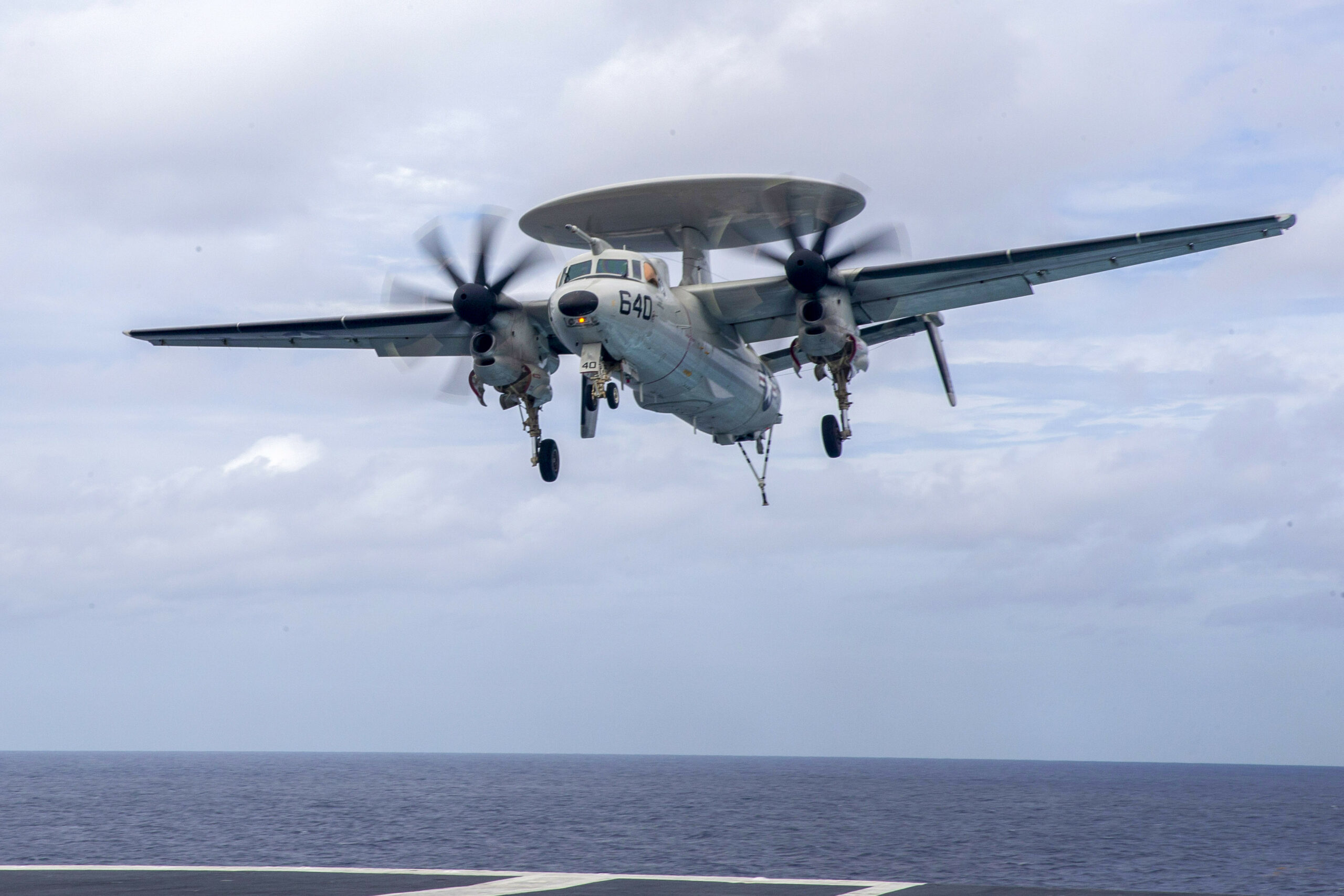
Credit: US Navy
Northrop Grumman’s E-2D AHE introduced new technology and capabilities, centred on the AN/APY-9, a mechanically and electronically scanned phased array radar operating in the UHF-band radar, with multi-sensor integration, and theatre missile defence capabilities. The platform features a glass cockpit and the cooperative engagement capability (CEC) as part of the naval integrated fire control (NIFC), alongside the in-flight refuelling capability.
Conceived as a carrier-based airborne C2 platform, in addition to the French Navy’s E-2Cs operated from the Charles de Gaulle aircraft carrier, the E-2 versions found success with land-based operations, having been acquired by six customers and is presently in service with Egypt and Mexico (E-2C), Taiwan (E-2T) and Japan. The latter has a fleet of 13 E-2C aircraft and since mid-2000s has put five E-2Ds into service out of the planned fleet of 13. In March 2023, the US Congress was notified by US DOD/DSCA of the approval for the possible sale of up to five additional E-2D platforms, spares, support and training for an estimated USD 1.38 Bn. In January 2021, the French MOD signed a Letter of Offer and Acceptance to procure three E-2Ds from the US Navy through Foreign Military Sales (FMS) for a maximum value of USD 2 Bn, scheduled to be delivered by 2028.
NAVAIR is currently working on operational testing and release of the DSSC-4, focused on enhancements to provide GPS access in an electronic attack (EA) environment, the replacement of the multifunction information distribution system low volume terminal (MIDS-LVT) with the MIDS-Joint Tactical Radio System (MIDS-JTRS) with incorporated Link 16 concurrent multi-netting and tactical targeting networking technology (TTNT), in support of NATO Intelligence Fusion Centre (NIFC) missions. Alongside this, the E-2D secret internet protocol router (SIPR) chat capability will support integration of various tools including tactical text communications, real-time tasking, and air tasking order (ATO) distribution. The DDSC-4 radar counter electronic attack (CEA) capability will be further expanded with the DSSC-5, alongside data fusion and CEC enhancements.
Boeing E-767
The E-767 AWACS combines the 767-200ER airframe with the S-band APY-2 radar, ESM and equipment suite similar to USAF E-3 AWACS. In February 2018, Boeing was contracted by AFLCM for installation and checkout of enhanced mission computing capability, ESM, traffic alert and collision avoidance system, next-generation IFF interrogator and datalink upgrades on the Japanese E-767 fleet.
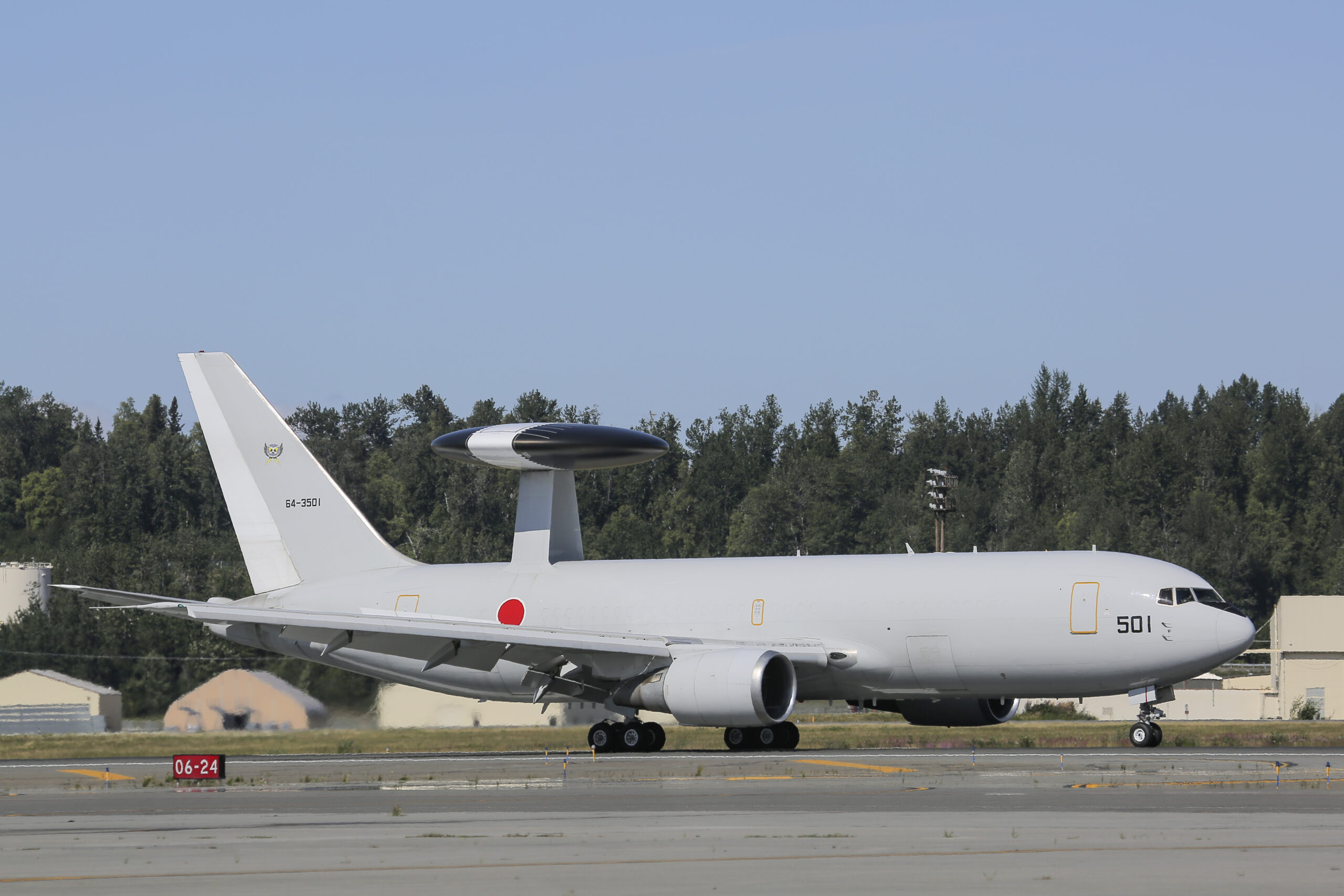
Credit: USAF
In June 2023, the US Air Force Life Cycle Management Center (AFLCM) returned the first Boeing E-767 AWACS platform to the Japanese Air Self-Defense Force (JASDF) following the completion of a major upgrade. The first of the four E-767 aircraft was redelivered after completing a mission computing upgrade (MCU), providing them with improved battlespace command and control, real-time information sharing among the service, decreased target identification time and increased lethality, alongside better interoperability with US systems. According to the programme content and Japan’s Acquisition Technology and Logistics Agency (ATLA), the upgrade also includes new electronic warfare support measures equipment to better detect and identify between various threats, but no details were provided on the equipment installation.
India’s DRDO solutions
In 2017, India declared their EMB 145 Netra Mk 1 AEW&C aircraft operational, and currently has two platforms in service. In early October 2023, the Chief of Staff of the Indian Air Force (IAF) announced plans for the procurement of an additional six platforms. These are due to be equipped with the same radar but will employ the latest-generation TRMs.
The Netra Mk 1 is based on the Embraer ERJ 145SM platform, modified to install the AEW&C mission suite developed by the Indian MOD’s Defence Research & Development Organisation (DRDO) and IAF alongside an inflight refuelling capability, new electrical generation and cooling systems. Developed by the DRDO’s Centre for Airborne Systems (CABS), the Netra Mk 1 mission suite is centred on a dorsal early warning multi-mode S-band radar featuring back-to-back AESA solid-state antennas and integrated IFF providing a 240° coverage (120° on each aircraft side) out to 250 km. The radar data, together with other sensor information, are fused by the multi sensor data fusion tactical software which interacts with the intercept control battle management, acting as a decision-making aid to attain air superiority over contested airspace. The platform combines radar electronic support measurement (RESM) and communication electronic support measures (CESM) systems, and self-protection systems (MWS, RWR and CMDS). The communications suite, including data links and SATCOM, are managed by five MFCs.

Credit: Indian Air Force
In September 2021, the Indian MOD gave the green light to procure and develop the more capable Netra Mk II variant. The IAF is collaborating with DRDO and Airbus Defence to modify six former Air India A321 aircraft, and plans to install the radar and mission suite in India. With an endurance of over seven hours and operating altitude of over 11,880 m, the platform will come with 12 MFCs, a larger and more powerful main radar in the same dorsal installation and nose, with GaN TRM modules to provide extended coverage compared to Netra Mk I, as well as IFF, ELINT/COMINT capabilities and improved communications and an EWSPS.
General Atomics Aeronautical Systems Unmanned AEW&C Concept
The MQ-9B SkyGuardian/SeaGuardian unmanned aerial vehicle (UAV) is a potential candidate to conduct persistent wide-area surveillance/airborne early warning (AEW) from land and aircraft carriers, in the latter thanks to proof-of-concept demonstrations to be conducted starting from this autumn in the US. General Atomics has conducted concept development and engineering studies to see if the MQ-9B could conduct different demanding operations including AEW missions supported by a radar manufacturer. During the Combined Naval Event 2023 conference at Farnborough in the UK, General Atomics showed an MQ-9B-based AEW&C solution with IFF and BMC2 capabilities. This configuration of the MQ-9B platform was equipped with a dual-pod radar solution, with each underwing pod accommodating a radar antenna. The platform also featured a central conformal pod hosting the processing and cooling capabilities.
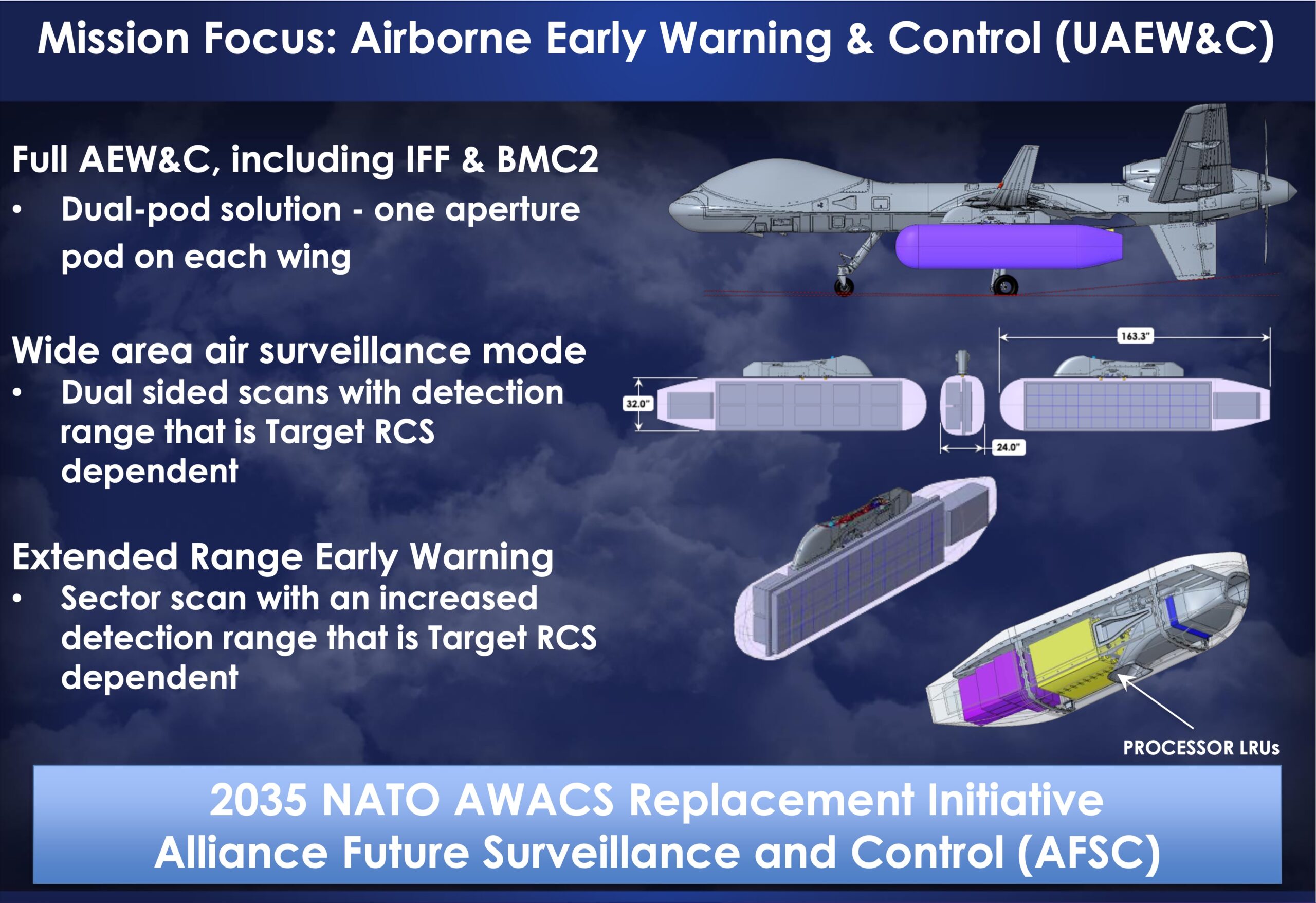
Credit: GA-ASI
Luca Peruzzi



